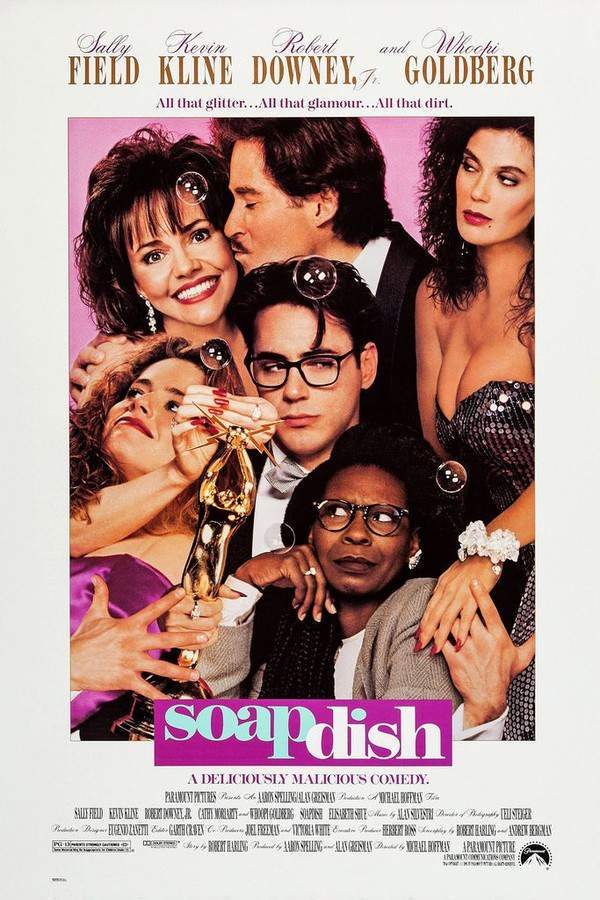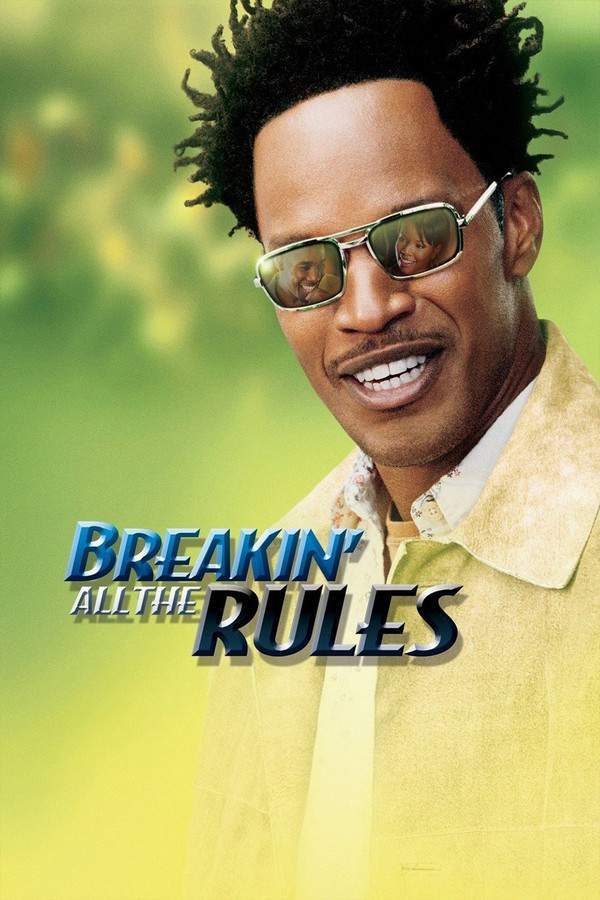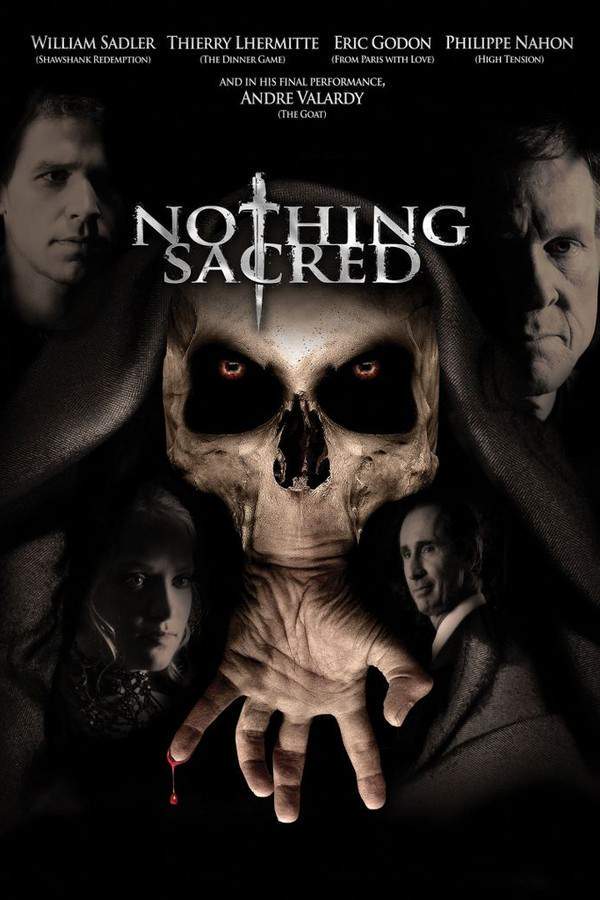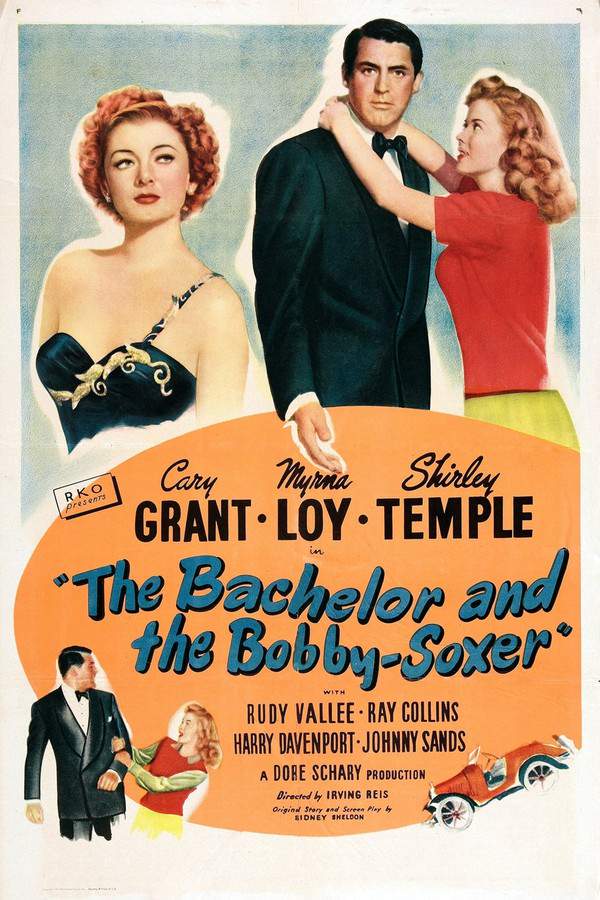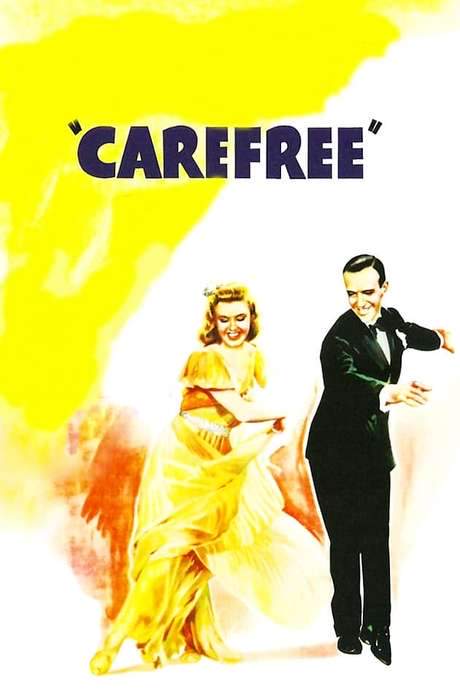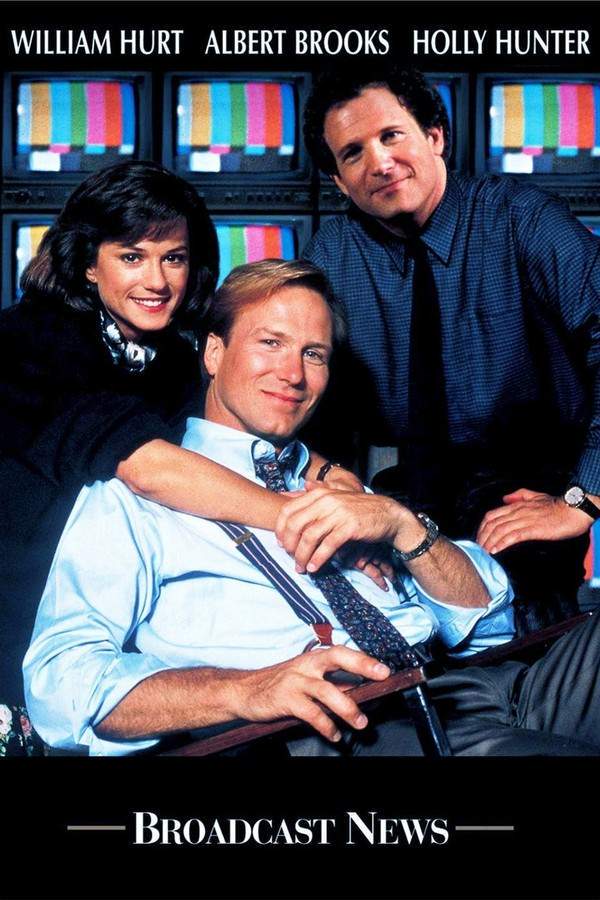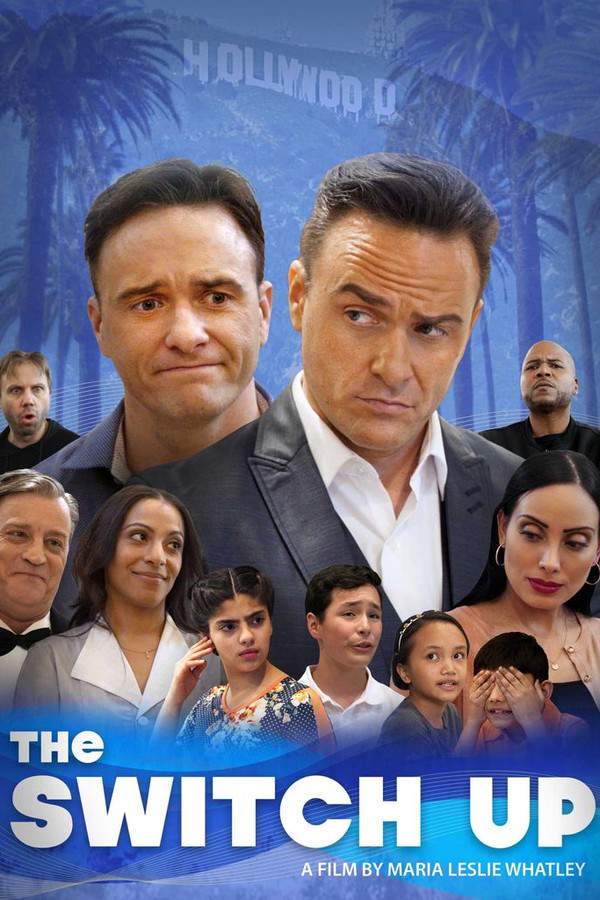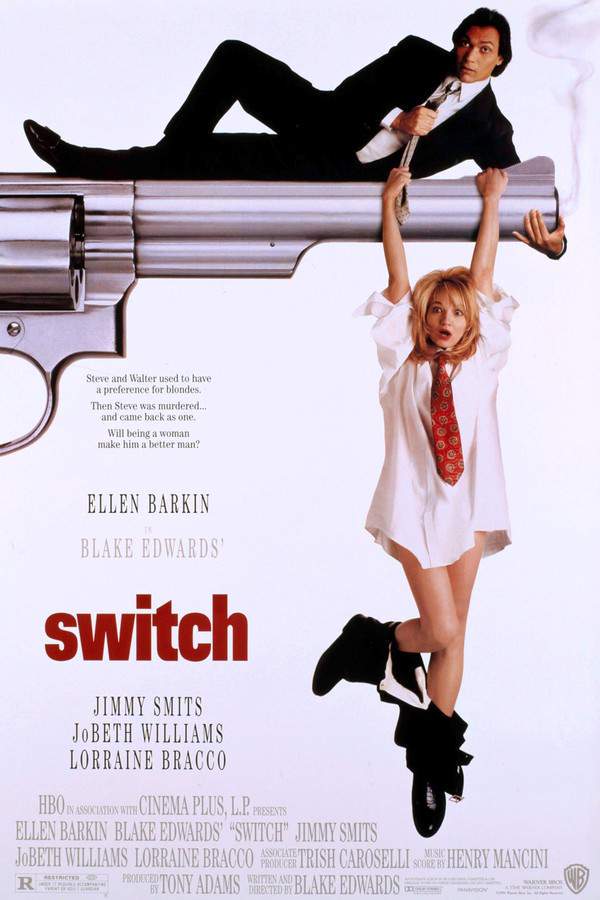
Switching Channels
Year: 1988
Runtime: 105 mins
Language: English
Director: Ted Kotcheff
There’s a lot more going on around here than news, weather, and sports. A television news chief courts his anchorwoman ex-wife with an eleventh-hour story.
Warning: spoilers below!
Haven’t seen Switching Channels yet? This summary contains major spoilers. Bookmark the page, watch the movie, and come back for the full breakdown. If you're ready, scroll on and relive the story!
Switching Channels (1988) – Full Plot Summary & Ending Explained
Read the complete plot breakdown of Switching Channels (1988), including all key story events, major twists, and the ending explained in detail. Discover what really happened—and what it all means.
John L. “Sully” Sullivan, IV is the stead-fast, ever-calculating news director of Satellite News Network in Chicago, where the clock and the camera never stop. His world is turned when his best reporter and ex-wife, Christy Colleran, returns from a vacation she took with Blaine Bingham, the owner of a sporting goods company who is clearly sparking a new romance with her. The reunion is far from peaceful: Sully seizes on a dramatic moment to push Christy into covering a high-stakes story—the impending execution of Ike Roscoe, a convicted killer whose case has become a political lightning rod. The execution sits at the center of a tense political contest between the Governor, a communicator of power and public image, and Roy Ridnitz, the state’s determined district attorney, with the outcome potentially reshaping the upcoming Democratic primary.
As the plot thickens, Blaine’s arrival in Christy’s orbit adds complexity to the newsroom battlefield. The smarter-than-he-appears Blaine manages to snag train tickets to New York, arranging a path that could lead Christy away from Chicago and toward a new life. But Sully isn’t done. He enlists his junior reporter, Siegenthaler, to buy up every available transportation option out of town, hoping to tie Christy to the station and the story rather than to a distant city. The plan threads through a lunch date where Sully explains Roscoe’s case—from the outside, it seems Roscoe killed a drug dealer who was, in fact, an undercover cop. The revelation reframes the entire political drama around the execution and the public’s mood in the gubernatorial contest, forcing everyone to confront what justice and media power really mean in a crowded, televised world.
The motion of the plot shifts toward a dangerous publicity stunt turned personal crossroads. Blaine and Christy’s impending New York trip becomes a literal test of fear and trust when Sully engineers a dramatic trap in a skyscraper. Blaine, who fears heights, is coaxed into a glass elevator with [Siegenthaler], and the elevator climbs toward a dizzying height. A crippling anxiety attack stops the ride, trapping Blaine and Christy inside until the danger subsides and the two are brought back to the ground, where Christy’s quick thinking and resolve revive the fragile order of the newsroom world around them. In the aftermath, Christy rushes to be with Blaine, but a deeper, more fragile bond remains to be weighed against her career and the pull of the city she sometimes loves more than life on the air.
Meanwhile, the political clock keeps ticking. The Governor decides to issue a pardon for Ike Roscoe during the 11:00 pm news, a decision that would play out live for viewers across the state. Ridnitz, maneuvering to win the political moment, presses to move the execution up to 10:00 pm and invites the media to televise it. In a flash of dramatic tension, Ike is strapped into the chair and a sudden power surge interrupts the proceedings, allowing him to escape. The chase resumes as Christy spots Ike in a limousine with Blaine as they race away from the courthouse and toward the city’s streets and backroads.
Christy’s pursuit leads to a tense, improvised showdown in the courthouse press room, where Ike hides in the photo copier after Christy radios Sully with crucial information. Ridnitz arrives, claiming Ike was seen on the third floor, and a round of comic escapades unfolds as reporters converge and the truth begins to surface. Christy’s quick-witted reporting, aided by a deft handling of timing and camera presence, stalls Ridnitz long enough for the pardon to materialize on the desk of the newsroom. The climactic moment arrives when Sully takes the recovered tape—surreptitiously captured by the newsroom—and hands it to Siegenthaler to broadcast the confession that Ridnitz sought a political victory through the execution. The revelation reframes the entire event in a way that favors truth over edict, and the story closes with a strange sense of closure between old flames and the stubborn, ever-present pull of the airwaves.
In the final beat, Blaine chooses to walk away from Christy, recognizing that her true passions lie with the headlines and the man who has shaped her career, Sully. The two reconcile the professional with the personal in a way that preserves both the romance and the integrity of the newsroom. The film ends with a celebratory tone of resilience and renewal as Christy Colleran and John L. “Sully” Sullivan, IV set their sights on a second honeymoon in Hawaii—an invitation to slow down and savor the moment after a city-wide story that proved that the truth is the ultimate lead.
Last Updated: October 09, 2025 at 14:18
Explore Movie Threads
Discover curated groups of movies connected by mood, themes, and story style. Browse collections built around emotion, atmosphere, and narrative focus to easily find films that match what you feel like watching right now.
Fast-Paced Newsroom Romances like Switching Channels
Witty, quick-fire romantic comedies set against the high-pressure backdrop of journalism.If you liked the witty banter and high-stakes environment of Switching Channels, explore more movies like it. These comedies feature competitive ex-couples, fast-paced newsroom settings, and romantic plots intertwined with journalistic endeavors.
Narrative Summary
Stories typically revolve around ex-lovers or rivals forced to work together on a high-profile story. The professional competition fuels their personal dynamic, leading to a series of comedic misadventures and heartfelt realizations, culminating in a celebratory reconciliation where career success and love align.
Why These Movies?
They are grouped by their unique blend of a specific, energetic setting (the newsroom), a fast-paced narrative driven by deadlines, and a central romantic-comedy arc built on witty repartee and competitive chemistry.
Screwball Comedy Revival Movies like Switching Channels
Modern takes on the classic screwball formula of rapid-fire dialogue and comedic chaos.Fans of the witty, fast-talking style of Switching Channels will enjoy similar neo-screwball comedies. These movies share a light tone, complex verbal humor, and plots where romantic entanglements drive comedic chaos, much like the classics but with a modern twist.
Narrative Summary
The narrative pattern involves a central couple, often mismatched or with a complicated history, who are thrown into a series of escalating, farcical events. The plot is propelled by misunderstandings and clever scheming, all underscored by sharp, rapid-fire dialogue that defines the characters' chemistry and intelligence.
Why These Movies?
They are united by a distinct comedic style prioritizing verbal wit over slapstick, a lighthearted tone even when dealing with serious topics, and a focus on the romantic chase as a battle of wits, resulting in a clever and happy resolution.
Unlock the Full Story of Switching Channels
Don't stop at just watching — explore Switching Channels in full detail. From the complete plot summary and scene-by-scene timeline to character breakdowns, thematic analysis, and a deep dive into the ending — every page helps you truly understand what Switching Channels is all about. Plus, discover what's next after the movie.
Switching Channels Timeline
Track the full timeline of Switching Channels with every major event arranged chronologically. Perfect for decoding non-linear storytelling, flashbacks, or parallel narratives with a clear scene-by-scene breakdown.

Characters, Settings & Themes in Switching Channels
Discover the characters, locations, and core themes that shape Switching Channels. Get insights into symbolic elements, setting significance, and deeper narrative meaning — ideal for thematic analysis and movie breakdowns.

Switching Channels Spoiler-Free Summary
Get a quick, spoiler-free overview of Switching Channels that covers the main plot points and key details without revealing any major twists or spoilers. Perfect for those who want to know what to expect before diving in.

More About Switching Channels
Visit What's After the Movie to explore more about Switching Channels: box office results, cast and crew info, production details, post-credit scenes, and external links — all in one place for movie fans and researchers.

Similar Movies to Switching Channels
Discover movies like Switching Channels that share similar genres, themes, and storytelling elements. Whether you’re drawn to the atmosphere, character arcs, or plot structure, these curated recommendations will help you explore more films you’ll love.
Explore More About Movie Switching Channels
Switching Channels (1988) Scene-by-Scene Movie Timeline
Switching Channels (1988) Movie Characters, Themes & Settings
Switching Channels (1988) Spoiler-Free Summary & Key Flow
Movies Like Switching Channels – Similar Titles You’ll Enjoy
Broadcast News (1987) Movie Recap & Themes
The Switch (2010) Story Summary & Characters
Switch (1991) Story Summary & Characters
Switch (2012) Full Summary & Key Details
Switched (2020) Film Overview & Timeline
Family Switch (2023) Film Overview & Timeline
Husband & Wife (2017) Detailed Story Recap
Holiday Switch (2007) Detailed Story Recap
Crazy for Change (2020) Movie Recap & Themes
The Great Christmas Switch (2021) Spoiler-Packed Plot Recap
Swap Meet (1979) Full Summary & Key Details
Changing Sides (2009) Full Summary & Key Details
Love Switch (2024) Movie Recap & Themes
Calling All Husbands (1940) Film Overview & Timeline
Switch Up (2024) Complete Plot Breakdown





